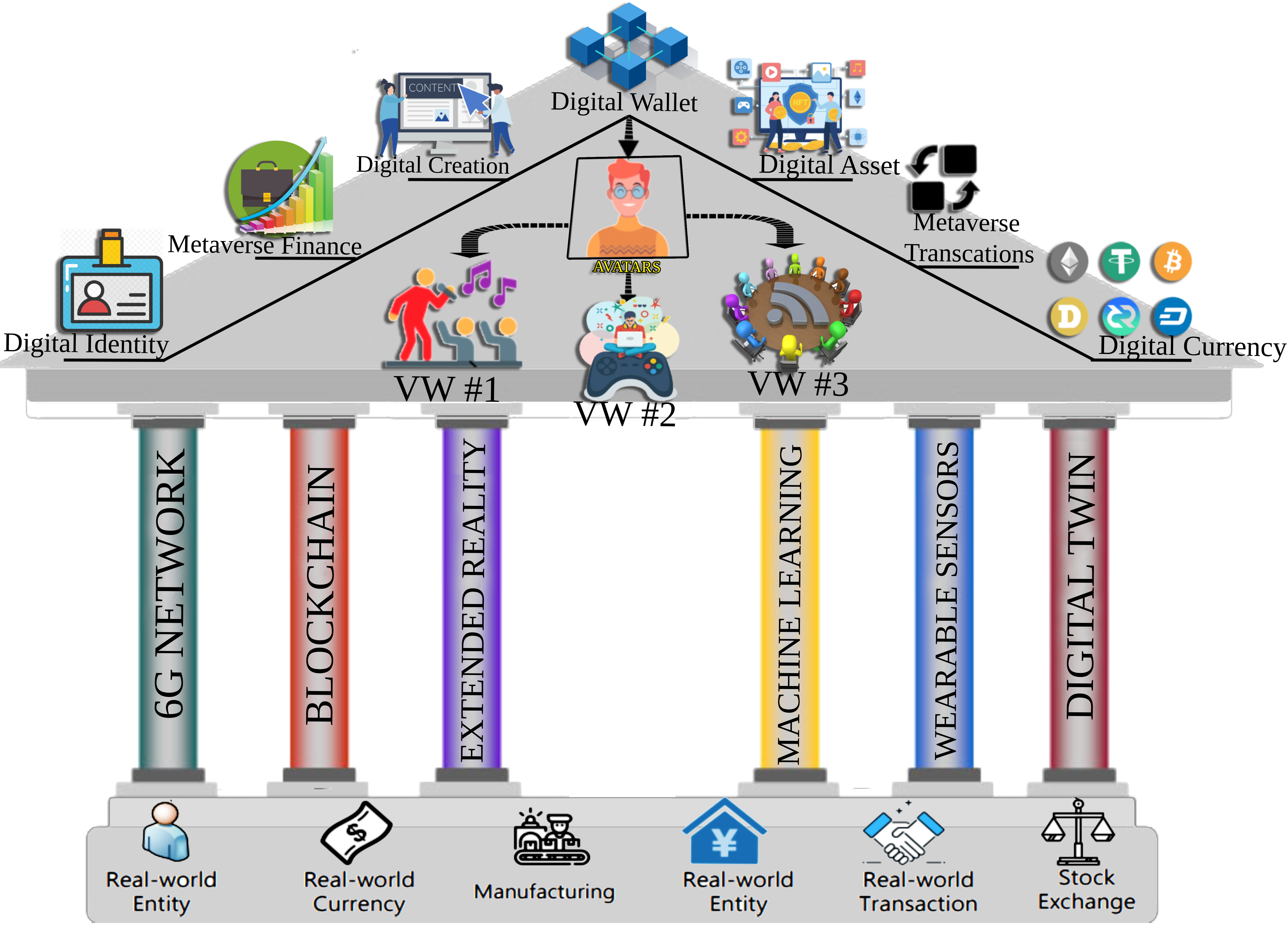- Citations
- D. Mebrahtom, S. Ghirmai, A. Sbhatu, M. Aloqaily, M. Guizani, and M. Debbah, Unleashing the Potential of the Metaverse: A Trust-Based Security Mechanism
DOI:N.B To be submitted soon
Source Code:Upcoming
PDF Download:Upcoming








In our recent project, "Self-Sovereign Identity for trust and interoperability in the Metaverse," we have embarked on creating an environment where users can navigate the virtual realm without concerns about their security. Establishing trust among users in this digital landscape has proven to be a formidable challenge, as it necessitates identifying and authorizing all participants in the virtual space. Furthermore, achieving interoperability poses another hurdle to overcome. To address these issues, we propose a Self-Sovereign Identity Management technique that enables users to assert their identities across various virtual service providers, employing a decentralized approach using blockchain technology. This stands in contrast to the traditional identity management system, where centralized entities like Meta hold sole control over user identities.


The objective of our project is to develop a Decentralized Metaverse Security mechanism that specifically tackles the challenges of trust and interoperability. To address the issue of trust, which is intricately tied to security, we expand upon the philosophy and principles of the Self-Sovereign Identity Management System. Our aim is to establish a framework, as depicted in the accompanying figure, that incorporates the requisite technologies and tools in alignment with our proposed model.
Furthermore, as we continue to work on this project, we plan to thoroughly evaluate the security and usability of our proposed mechanism. We will use various testing methods such as penetration testing, security audits, and user surveys to ensure that the system is robust and user-friendly. Additionally, we will also work on integrating the mechanism with existing virtual.
Essentially, the "Metaverse" term generally refers to a universe beyond the physical world. Experts envision it as a 3D representation of the Internet which participants can access via Extended Reality (XR) technologies. The metaverse is a vast virtual reality platform that provides an immersive experience to its users. It allows users to interact with each other, create and modify digital objects, and engage in commerce and social networking. Although it has been discussed for quite some time in one form or another, the Metaverse remains a vague concept for many people. Recently, Facebook has re-branded itself into Meta, while a famous video game company - Epic Games announced a 1.0 billion dollars investment to build the Metaverse, and other giant tech companies such as Google and Microsoft are in the race as well. When it comes to government investments, the Dubai government has also invested in the virtual world asset and is expected to start providing services within this virtual world.
There is a set of requirements that one should consider when building a reliable, interactive, scalable, secure, and interoperable Metaverse. Ideally, the Metaverse should have:
- Responsive Vision and Ergonomic: The Metaverse should pack a high-resolution headset with low latency time to avoid motion sickness.
- Open Interoperability: Users should be able to use their avatars, digital wallet, and objects across multiple virtual worlds.
- Open Standard: Experts envision it as a 3D representation of the internet in which participants can access extended reality (XR) technologies. Like the Internet, no single entity should take control of the Metaverse.
- Security and Privacy: Like online social networks, avatar impersonation, user authentication, online harassment, NFTs security, and copyright issues are expected to occur in the Metaverse as well. Standards and regulations should be adopted to govern data collection for a personalized immersive experience in the Metaverse.
- Immersive Experience: The entire human body should be able to feel a multi-directional movement, along with immersive audio for enhanced and realistic user experience.
The driving technologies behind the metaverse include Blockchain, Digital Twin, Extended reality (XR), Machine Learning(ML), wearable devices, and strong communication network such as 5G+.